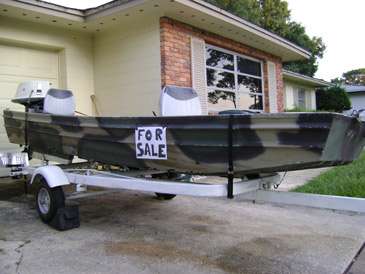
This multi-part series will profile the favorite fall baits and techniques of four top pros. Each approaches the fall bassing challenge differently. Nevertheless, each has demonstrated success over a long career.
For Mike McClelland, fall means football — as in football jigs.
"I don't fish with only one lure very often, if ever. But if I had to leave the dock in the fall of the year with only one bait in my boat it would be a Jewel Football Jig in peanut butter and jelly. I prefer the 5/8-ounce model for most applications," says the five-time Bassmaster Classic qualifier. "It's a versatile bait that'll catch them under most conditions.
"When they want a little bulk, or if I want to slow its fall, I'll rig it with a Zoom Baby Brush Hog in watermelon and purple. The color of the trailer is important. I don't like colors that clash or look weird. Fall is the time of year for natural looking baits that blend with nature."
McClelland searches for transition areas in October and November regardless of where he's fishing. The shad are moving shallow, and so are the bass. But, unlike shad, bass want to be close to deep water. Over the years his most productive places have been points running out onto flats near channel swings or alongside deep river channels in backwater cuts or inflow areas.
"The bass are usually feeding shallow, but they won't be far from deep water. Every lake is different so shallow and deep are relative terms. What's shallow in one might be deep in the other. It's the drop and security of deeper water that makes a spot a good one, not an absolute depth measurement.
"With that said, I'd say that in most lakes you're looking for flats no more than 5 or 6 feet deep and a drop or channel at least a couple of feet deeper than the flat, more if you can get it. But, like I said, everything is relative. Bass can't choose where to live. They have to use what's available to them and so do we.
"If there's wood or other type of cover in the area, so much the better. But remember, this is the fall feeding time. Flats and baitfish next to deep water are more important than cover. If cover's there, fine. If not, fish anyway."
His advice is to make your jig do double duty at this time of year. If you rig the skirt so that the smoke color is down it'll look like a baitfish — shad in most lakes — on the fall and like a crayfish as it scoots along the bottom with the brown and purple facing up.
"I like to make short flips, pitches or casts and let it fall straight down on a slack line. If they're chasing shad that'll do the trick.
"After it's on the bottom, a steady, slow to moderate drag is usually best. The water in October and November is cooling, not cold. Don't overdo the slow, lethargic presentation that you hear so much about. If they're feeding they'll go after it."
He throws his Jewel Football Jig on his 7 foot, 4 inch Falcon Signature Series Heavy Cover Finesse Rod. His reel is a Quantum Tour Edition (6.3:1 gear ratio) spooled with 15-pound-test Seaguar fluorocarbon line.
"That outfit gives me just the right combination of feel, sensitivity and strength. Some fall bites can be subtle, but the fish tend to be larger than usual. You need the feel to detect bites and the strength to get them to the boat. One without the other doesn't work very well."




